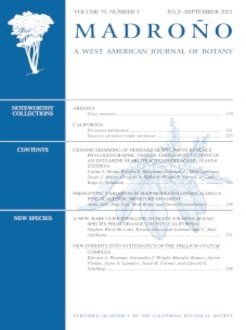Estuaries form a series of unique wetland habitats isolated from each other, often facilitating genetic divergence among populations. The estuarine seablite Suaeda esteroa Ferren & S.A.Whitmore (Suaedoideae; Chenopodiaceae) is common in northwestern Mexican estuaries, where the spatial isolation from one another may promote diversification within this plant species. In this study, we created a novel nuclear ribosomal DNA genome skim dataset from 30 S. esteroa herbarium specimens collected from estuaries along the northwestern Mexican coast to assess genetic patterns within and among localities. We constructed maximum likelihood and Bayesian phylogenetic trees, and conducted individual- and estuary-level landscape genetics analyses. While our landscape genetics analyses provide evidence that more geographically distant individuals are more genetically distant, our phylogenetic tree and estuary-level analyses demonstrate surprising groupings of geographically distant estuaries. We hope our findings will encourage further investigation of gene flow among northwestern Mexican estuaries and promote conservation action within the region.
How to translate text using browser tools
6 March 2024
GENOME SKIMMING OF HERBARIUM SPECIMENS REVEALS PHYLOGEOGRAPHIC TRENDS AMONG POPULATIONS OF AN ESTUARINE SEABLITE (CHENOPODIACEAE: SUAEDA ESTEROA)
Carina I. Motta,
Kristen E. Hasenstab-Lehman,
C. Matt Guilliams,
Susan J. Mazer,
Gregory A. Wahlert,
Wayne R. Ferren Jr.,
Katja C. Seltmann

Madroño
Vol. 70 • No. 3
July–September 2023
Vol. 70 • No. 3
July–September 2023
Chenopodiaceae
estuaries
genome skimming
landscape genetics
Mexico
nuclear ribosomal DNA cistron (nrDNA)
phylogeny




